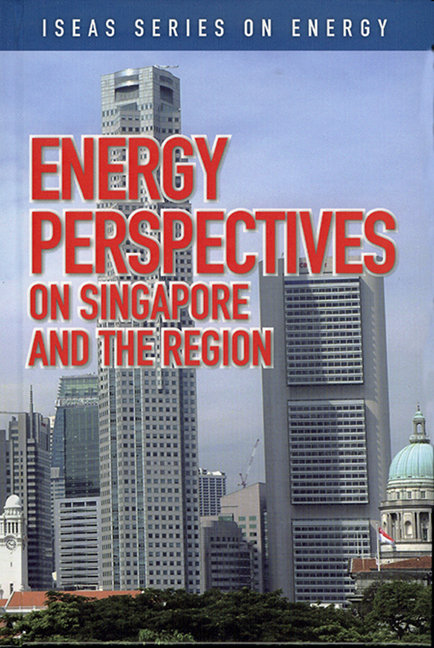Book contents
- Frontmatter
- Contents
- Foreword
- Preface
- The Contributors
- 1 Overview of Singapore's Energy Situation
- 2 Singapore's Changing Landscapes in Energy
- 3 Singapore's Role as a Key Oil Trading Centre in Asia
- 4 Large-Scale Solar PV Power Generation in Urban High-Rise Buildings in Singapore
- 5 The High-Carbon Story of Urban Development in Southeast Asia
- 6 Renewable Energy and the Environment: Technology and Economic Perspectives
- 7 Delivering Results in a Booming Rig Market
- 8 The Success Story of Rig Building in Singapore
- 9 The Singapore Oil Situation
- 10 Singapore Petroleum Company: Adding Value to the Singapore Oil Industry
- 11 Oil Storage: The Singapore Story
- REGIONAL and INTERNATIONAL
- Index
4 - Large-Scale Solar PV Power Generation in Urban High-Rise Buildings in Singapore
Published online by Cambridge University Press: 21 October 2015
- Frontmatter
- Contents
- Foreword
- Preface
- The Contributors
- 1 Overview of Singapore's Energy Situation
- 2 Singapore's Changing Landscapes in Energy
- 3 Singapore's Role as a Key Oil Trading Centre in Asia
- 4 Large-Scale Solar PV Power Generation in Urban High-Rise Buildings in Singapore
- 5 The High-Carbon Story of Urban Development in Southeast Asia
- 6 Renewable Energy and the Environment: Technology and Economic Perspectives
- 7 Delivering Results in a Booming Rig Market
- 8 The Success Story of Rig Building in Singapore
- 9 The Singapore Oil Situation
- 10 Singapore Petroleum Company: Adding Value to the Singapore Oil Industry
- 11 Oil Storage: The Singapore Story
- REGIONAL and INTERNATIONAL
- Index
Summary
INTRODUCTION
The present growth of energy has been the prime concern of many countries. As nations grow, so do their hunger for energy. This need is causing an imbalance between nations regarding their energy usage pattern and mix of energy sources. At present, the energy demand for Singapore is 33,100GWh per year (EMA data 2004). Thus the daily energy demand translates to 90GWh per day. To meet the Kyoto Protocol (which Singapore acceded to on 11 July 2006) and also to avoid a future energy shock (depletion of conventional energy sources combined with rising fossil fuel prices), Singapore needs to look at alternative energy sources.
PRESENT ENERGY MIX AROUND THE WORLD
At present the energy mix shows a variety of energy sources. Global primary energy consumption is 114,000TWh per year, with renewables comprising only 1,000TWh per year, which is less than 0.1 per cent. Solar photovoltaic (PV) contributes a mere fraction of the renewable portion, although growing fast.
A Shell scenario of energy demand and mix up to the year 2060 notes that the contribution from renewables could be as high as 40 per cent by the year 2060, with PV alone making up 13 per cent of the total energy supply.
CHOICES IN ALTERNATIVE ENERGY SOURCES FOR SINGAPORE
Among the available alternate or renewable energy sources such as solar, wind, bio-mass, hydro, tidal, and ocean energy, solar is the obvious choice for countries like Singapore. The reasons for choosing solar energy are:
• Singapore's proximity to the equator endows it with plentiful solar irradiation all year round (average of 4.5kWh/m2/day)
• The average wind velocity (<8m/s annual average) does not support large-scale wind power generation.
• Lack of mountains means hydropower is not an option.
• Bio-mass depends too heavily on imported feedstock to be realistic.
• Tidal and ocean power is in its infant stage of development.
- Type
- Chapter
- Information
- Energy Perspectives on Singapore and the Region , pp. 42 - 46Publisher: ISEAS–Yusof Ishak InstitutePrint publication year: 2007



